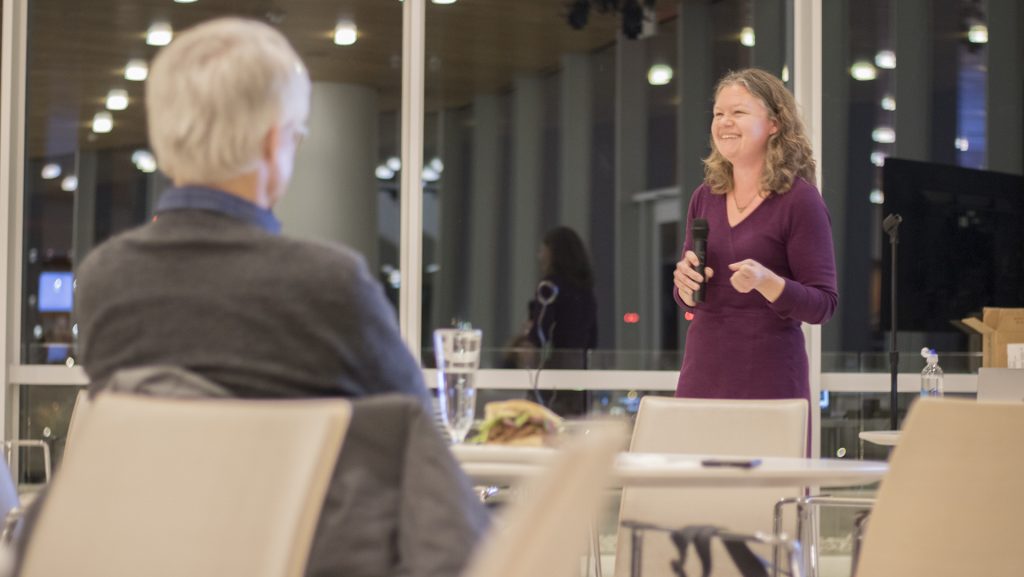When most people think of Iowa, one thing comes to mind: cornfields.
But what not many people realize, however, is the overlap between small- and large-scale farms. University of Iowa Clinical Assistant Professor Brandi Janssen discussed the dichotomy in a lecture on Thursday.
The lecture was part of the “Science on Tap” informal forum series presented on Thursdays at Hancher’s Stanley Café.
Originally trained as an anthropologist, Janssen is now a clinical assistant professor of occupational and environmental health and the director of the Center for Agricultural Safety and Health.
Janssen identified the two main types of farm systems in Iowa and described the similarities, differences, and cooperation between the two.
She said one of these types is an economically rational, large-scale farm that produces raw materials that are processed. On the other side, she said there are loose collections of locally operated organic farms. Both play a substantial role in Iowa’s agricultural market.
“Iowa is the No. 1 producer of corn, soybeans, and hogs,” Janssen said. “About one-third of the nation’s ethanol comes from Iowa, and as of the 2012 Ag Census, the total products were worth $30 billion.”
Janssen said the alternative system of smaller farms also do well. Iowa remains second per capita in number of farmers’ markets compared with other states. There are also 85 community-supported agriculture farms across the state and 800 certified organic farms.
RELATED: Safe and sustainable on the land
Janssen shared stories about farmers she has worked with and their wide variety of experiences. She noted some of the challenges local or small farmers experience and offered suggestions for farmers to overcome them.
“What I realized is a lot of it is dictated by things beyond the farm itself. It’s not really about the farm, necessarily,” Janssen said. “It’s about the markets, the availability, the labor.”
She noticed many of the small farmers she worked with cooperating with larger commodity farms in ways she didn’t expect. She shared a story about a farmer who used the equipment of her neighbor to work her farm. Because it is not cost-effective for such a small farm to buy that equipment, the large farm provided a crucial opportunity.
She also touched on the shared hazards on all farms, despite how conventional the farm is perceived.
“Overall, a farm is a farm,” Janssen said. “We know that in Iowa there are more occupational fatalities related to farming than any other industry in our state.”
She noted the ways in which small farms tend to grow a diverse array of crops while more commercial farms specialize in one or two. She said focusing on more quantity of one crop can make a farmer’s crops more profitable.
“All food was local food at one time,” Ag Safety Center administrative-services coordinator Ralph Altmaier said. “It has shifted further and further and become more centralized in our production and more specialized.”
Melissa Dunhap, the executive director of Local Foods Connection, is a farmer on a 25-acre certified organic farm in the Grinnell area. She said the small-scale farming approach has worked for her.
“There are a lot of us out there,” Dunhap said. “But if there are communities that support us, we’ll be able to grow, and we’ll see more farms like ours.”



